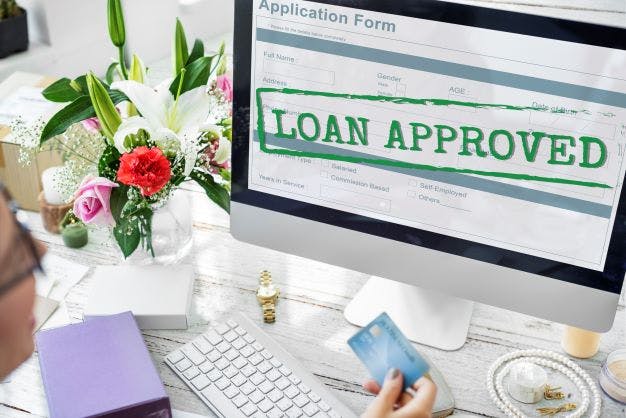Lenders of all types want to lower their portfolio default rates. Some lenders still rely on manually created risk assessment tools and portfolio management spreadsheets. However, the most astute lenders are turning to automation and technology.
Loan disbursement carries various risks. Providing credit to exemplary borrowers is uncomplicated. However, expanding your business when providing services to subprime customers is more complicated.
As a precaution against lending risk and bad debt, many lenders have limited their audience to only well-known applicants, although there are better approaches than this.
An effective way to reduce loan risk and bad debts are to comprehensively understand a borrower's creditworthiness, which goes beyond traditional credit rating.
Consumer lenders have started using cloud-based lending technologies to gauge default and default likelihood better. In addition, modern tools have improved the dependability and productivity of risk management.
In this article, we'll evaluate how lenders can reduce risk tied to loan disbursement and recover bad debt.

Reducing Credit Risk For Lenders
Any lending business should prioritize preventing bad debts from ever occurring. Therefore, lenders must thoroughly understand their borrowers' ability to repay loans.
Finding effective methods to lower credit risk is complicated by various factors. The first is the ever-shifting nature of the risks themselves. Lenders need to stay current on compliance standards because they change regularly and must be used to manage portfolio risk.
In addition, more lending options are available when a lender has a diversified portfolio, but the firm's exposure to risk also rises.
Lenders need a system that detects distinct risk variables for each type of loan and applicant. They can then carefully manage this risk throughout the loan's lifespan to deal with these larger risks.
Banks, Fintechs, BNPL companies, and other lenders can lessen their exposure to credit risk by switching to a cloud-based software platform that can handle numerous loan products. This lending software includes fraud analytics tools, creditworthiness and credit scoring tools, and automation in borrowers' applications.
Here are a few tips to help lenders reduce bad debts.
1. Access Borrower's Creditworthiness
Numerous data sources today provide a more comprehensive picture of an applicant's financial health. These data sources are gaining importance in the world of digital banking. Therefore, fintech firms permit digital lending platforms to rely on these data sources when making decisions.
When businesses collect customer data, data privacy laws are crucial. The customer must legally consent to share their data, including personal and confidential information. This information gives companies a much clearer picture of the applicant's creditworthiness.
You can use data from Oystr Finance, an alternative data provider, to get a clearer picture of the creditworthiness of your customers. Other data reveals these borrowers' information:
- Financial details and current account status
- Current employment and income standing
- Purchase habits and expenditure records
- Various utility and telecommunications bill payment histories.
- Rental record
- Documentation of any prior bankruptcies and additional information.
Lending institutions increasingly utilize alternative credit data for loan underwriting and to supplement existing credit scores. In addition to the FICO score, nearly 80% of lendersuse at least one alternative credit data source to determine creditworthiness. Lenders rely on these data points to assess borrowers more accurately. This data assists lenders in making quicker and more informed decisions.

2. Loan Origination Systems (LOS)
Alternative credit scoring information reduces lending risks. To utilize these data sources, however, lenders must digitize their operations. Combining traditional credit data with alternative data can provide lenders with numerous opportunities. For instance, modern loan origination systems can assist lenders in determining whether a borrower is creditworthy (in just a few minutes).
Integrating other data sources using APIs with modern LOS is also possible. It consolidates information from various sources. All data is standardized. The system can then evaluate the applicant's creditworthiness or forward the consolidated information for manual underwriting. In the realm of digital lending, AI-assisted underwriting is a rising trend. Borrowers can apply for and receive loans without manual intervention from lenders. However, borrowers must consent to share information that enables the platform to evaluate their financial health.
3. Automated Loan Processes
A loan origination system facilitates loan disbursement to qualified applicants, whereas a collections system encourages borrowers to make timely payments. In addition, lenders can utilize collections CRMs that assign borrowers automatically to teams and agents.
As a lending organization expands, keeping track of borrowers can become difficult. Additionally, a specialized tool can categorize borrowers and suggest collection strategies. Moreover, it can serve as a reminder for agents to follow up with clients. These can automate communications with debtors based on their actions.
4. Real-Time Analytics for Collections
Dedicated loan origination systems enable businesses to regularly assess the performance of their portfolios. This analysis enables businesses to maintain efficient and accurate underwriting procedures. For example, a borrower with a good traditional credit score may show red flags when using alternative scoring. A few significantly late repayments from a different loan vendor may not change a customer's credit score. However, alternative data can see this as a red flag and show a clearer picture of the borrower's financial health.

How Can Lenders Recover Bad Debt
Bad debts are nearly inevitable for lenders. Sometimes, regardless of how hard you try to avoid it, you have no choice but to write off some debts.
From the lender's perspective, debt collection is difficult and time-consuming. Therefore, it is not always worthwhile to pursue the collection of a small debt. Before officially labeling a debt as delinquent, lenders must adhere to specific procedures.
They could use internal collection methods, hire a collection agency, or go to court, for example. It is still possible to attempt collection before the debt is deemed delinquent.
Regardless of the borrower's past credit history, the borrower's capacity to repay the loan remains at risk. Therefore, always stay prepared to choose the simplest and most suitable debt repayment method.
Now is the time to initiate the collection process for past-due accounts. Any funds received from the debtor are considered bad debt recovery if a debt is deemed uncollectible.
When lenders cannot reach an amicable arrangement with borrowers, they frequently resort to legal action. As a result, the lender may recover the receivable in whole or part. Additionally, bad debts may be collected by selling the borrower's collateral.
Although lenders would be better off if they never made bad loans in the first place, these are a few suggestions to help recover bad debt.
1. Sending Official Messages
Before writing off the debt as uncollectable, an email, call, text message, and others should be sent to the borrower. The gravity of the situation necessitates a handwritten letter. If you wish to request payment directly, you can do so.
2. Contact a debt collection agency.
A debt collection agency's arsenal includes phone calls, email correspondence, and legal action. They convince debtors to pay and frequently assist them in establishing a payment plan. If legal action is necessary, a debt collection service can help the lender in moving the case forward. Typically, debt collection agencies deduct a percentage of the amount they collect as their fee. A reputable company knows how to communicate with debtors in a manner that does not harm the lender's standing with current clients.
3. Take Legal Actions
Legal action should be considered if the situation cannot be resolved quickly. However, there is no assurance of success in court, and regardless of the outcome, you will be responsible for court costs. Therefore, pursuing legal action may not be worthwhile unless the amount in question is substantial.
Conclusion
Lending is a deep market with many players involved in every stage. Many companies are interested in pricing, loan underwriting, and the overall experience with their potential borrowers.
As the business landscape has changed, advances in alternative scoring and digital lending have become increasingly essential. Using alternative scoring technologies can help improve the efficiency of the loan process, so it will be easier to collect bad debts.
Oystr Finance can facilitate your lending process and enable you to deliver faster loans while mitigating lending risk. Want to learn more? Visit our website today.

